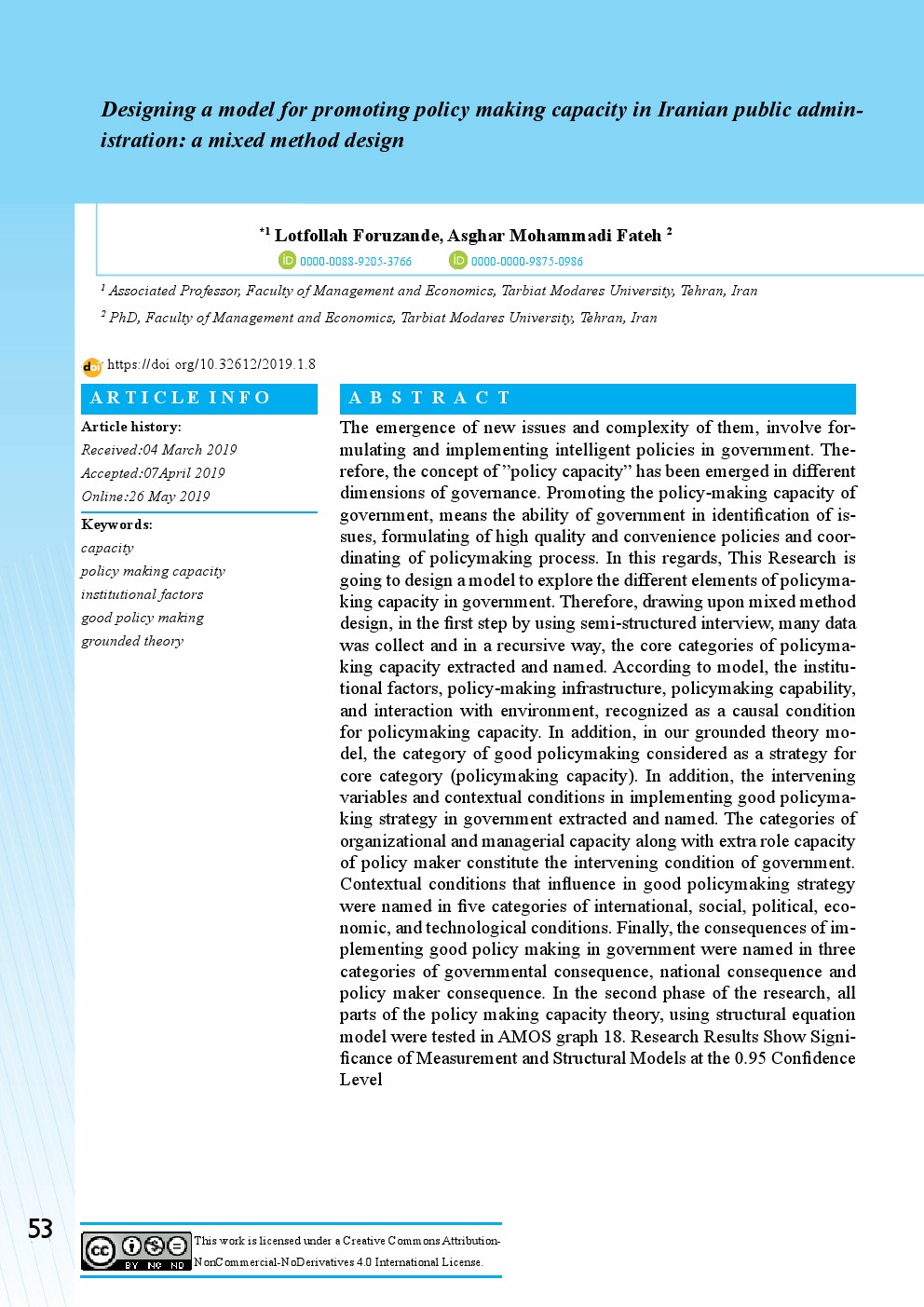Designing a model for promoting policy making capacity in Iranian public administration: a mixed method design
Main Article Content
Abstract
The emergence of new issues and complexity of them, involve formulating and implementing intelligent policies in government. Therefore, the concept of ”policy capacity” has been emerged in different dimensions of governance. Promoting the policy-making capacity of government, means the ability of government in identification of issues, formulating of high quality and convenience policies and coordinating of policymaking process. In this regards, This Research is going to design a model to explore the different elements of policymaking capacity in government. Therefore, drawing upon mixed method design, in the first step by using semi-structured interview, many data was collect and in a recursive way, the core categories of policymaking capacity extracted and named. According to model, the institutional factors, policy-making infrastructure, policymaking capability, and interaction with environment, recognized as a causal condition for policymaking capacity. In addition, in our grounded theory model, the category of good policymaking considered as a strategy for core category (policymaking capacity). In addition, the intervening variables and contextual conditions in implementing good policymaking strategy in government extracted and named. The categories of organizational and managerial capacity along with extra role capacity of policy maker constitute the intervening condition of government. Contextual conditions that influence in good policymaking strategy were named in five categories of international, social, political, economic, and technological conditions. Finally, the consequences of implementing good policy making in government were named in three categories of governmental consequence, national consequence and policy maker consequence. In the second phase of the research, all parts of the policy making capacity theory, using structural equation model were tested in AMOS graph 18. Research Results Show Significance of Measurement and Structural Models at the 0.95 Confidence Level
Downloads
Article Details

This work is licensed under a Creative Commons Attribution-NonCommercial-NoDerivatives 4.0 International License.
References
2- Brinkerhoff, D.W. and B.L. Crosby. 2002. Managing Policy Reform: Concepts and Tools for Decision-Makers in Developing and Transitioning Countries. Bloomfield, CT: Kumarian Press
3- Brown,.(2007). Electronic government and public administration. The American Review of Public Administration June 1, 2007 37: 142-177
4- Buchholz, Rogene; Essentials of Public Policy for Management, New York: Prentice Hall, 1985, p. 29.
5- Canadian Council for International Co-operation.(2006). BUILDING KNOWLEDGE AND CAPACITY FOR POLICY INFLUENCE: Reflections and Resources.
6-Carpenter, D. (2001) The Forging of Bureaucratic Autonomy: Reputations, Networks and Policy Innovation in Executive Agencies 1862–1928. Princeton, NJ: Princeton University Press.

